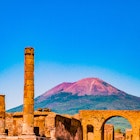Whilst the southern Italian city of Naples is well known for the anarchic cacophony of its street life, few visitors are aware that an eerily quiet underworld lurks beneath the surface.
The city's inhabitants have been tunnelling into the easily quarriable yellow tuff rock beneath their feet for millennia, leaving a veritable honeycomb of crypts, catacombs and air-raid shelters for visitors to explore.
Time travel at Napoli Sotterranea
Illuminating and entertaining, the Napoli Sotterranea guided tour digs deep down, forty meters down, into Naples’ multi-layered history. You will cross through the reverberant cavities of an ancient Greco-Roman aqueduct and squeeze through a constricted channel with only a candle as your guide and the promise of an aquamarine cistern at the other end. Reminders of the underground’s use as a WWII air raid shelter cast a sombre note, whilst an experimental underground vegetable garden shines a light towards the future.
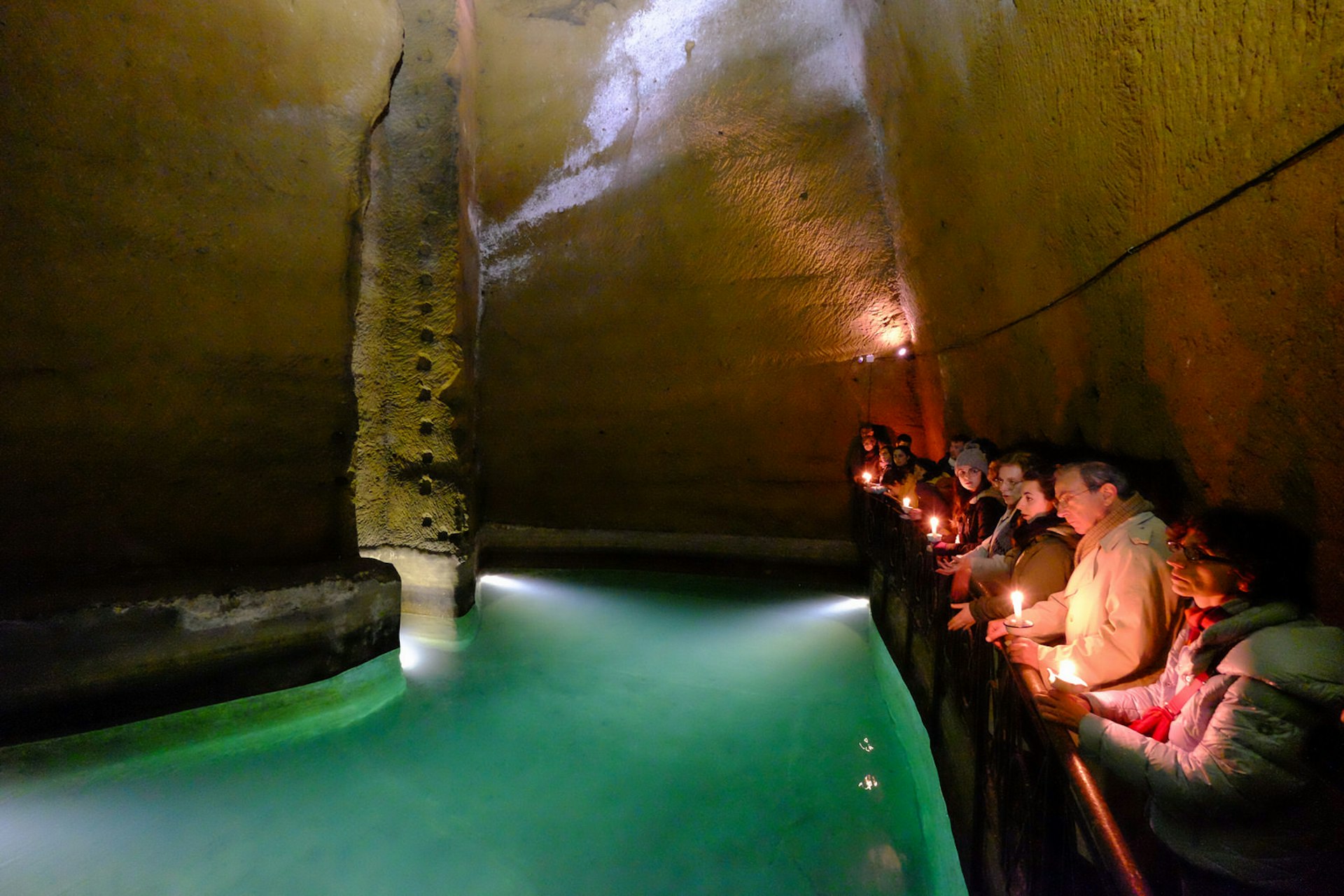
Remember WWII at the Bourbon Tunnel
No one escapes the Bourbon Tunnel tour unscathed. The sheer size and scale of this cavernous 17th-century cistern turned would-be royal escape route are humbling enough, but the cruel reminders of its use as a WWII air-raid shelter will chill you to the bone: low-voltage electricity supplies, toilets, showers, cots, toys and heart-breaking graffiti – messages of hope and fear etched into the walls for posterity. Book ahead for a longer and more immersive experience on the 'Adventure' or 'Speleo' tours.
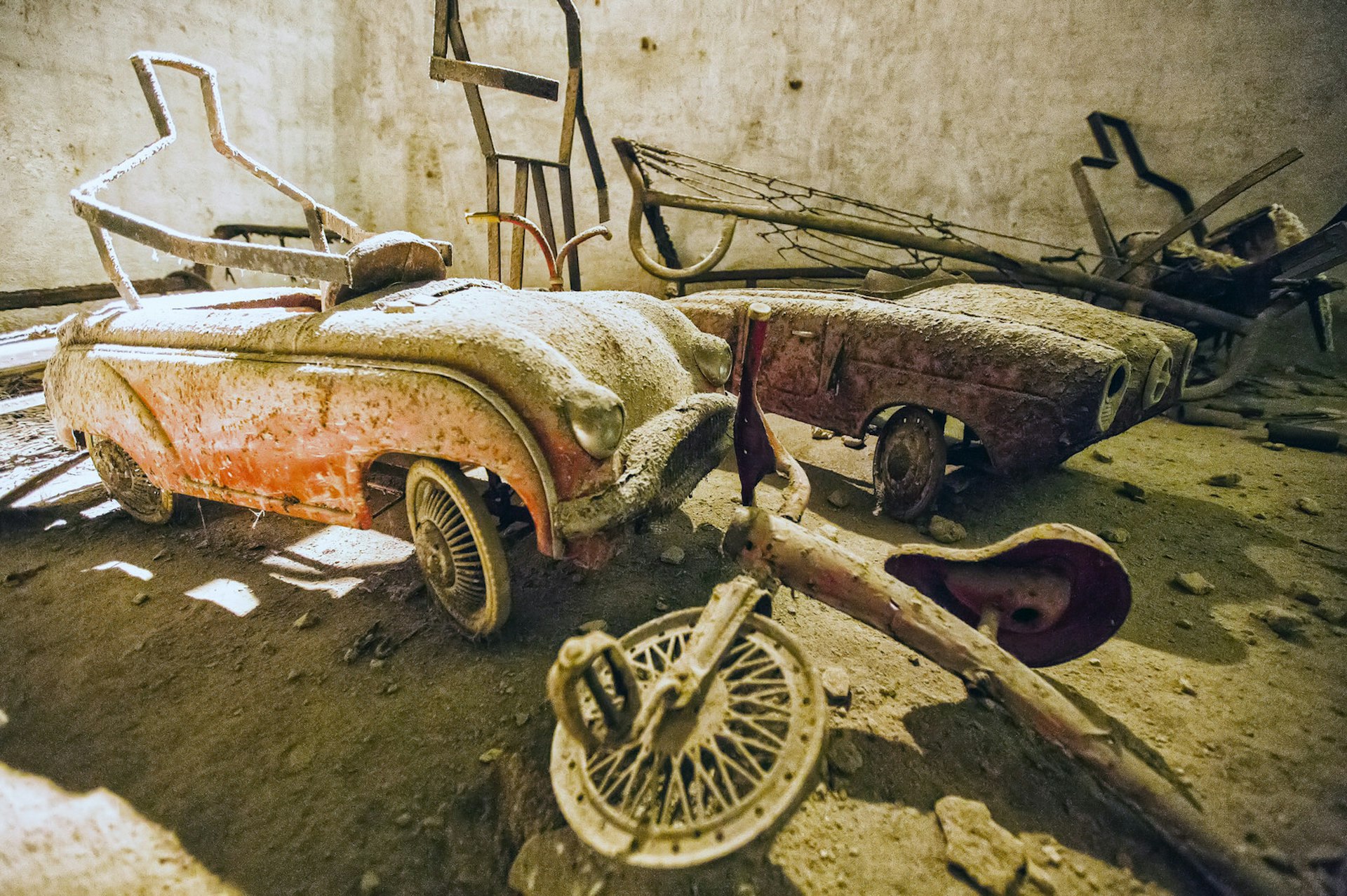
Walk the streets of ancient Neapolis
Discover the often overlooked Greco-Roman city of Neapolis, hidden down a secret stairway in San Lorenzo Maggiore’s main cloister. Descending one flight down lands you smack in the middle of ancient Neapolis' marketplace. Stroll amongst dimly lit shopfronts of pale-yellow diamond-patterned bricks: once premises for the butcher, the baker, even the banker. Pass through an arched cryptoportico (a covered passageway that was perhaps the city's fish market) and beyond find precious fragments of frescoes and mosaic floors.
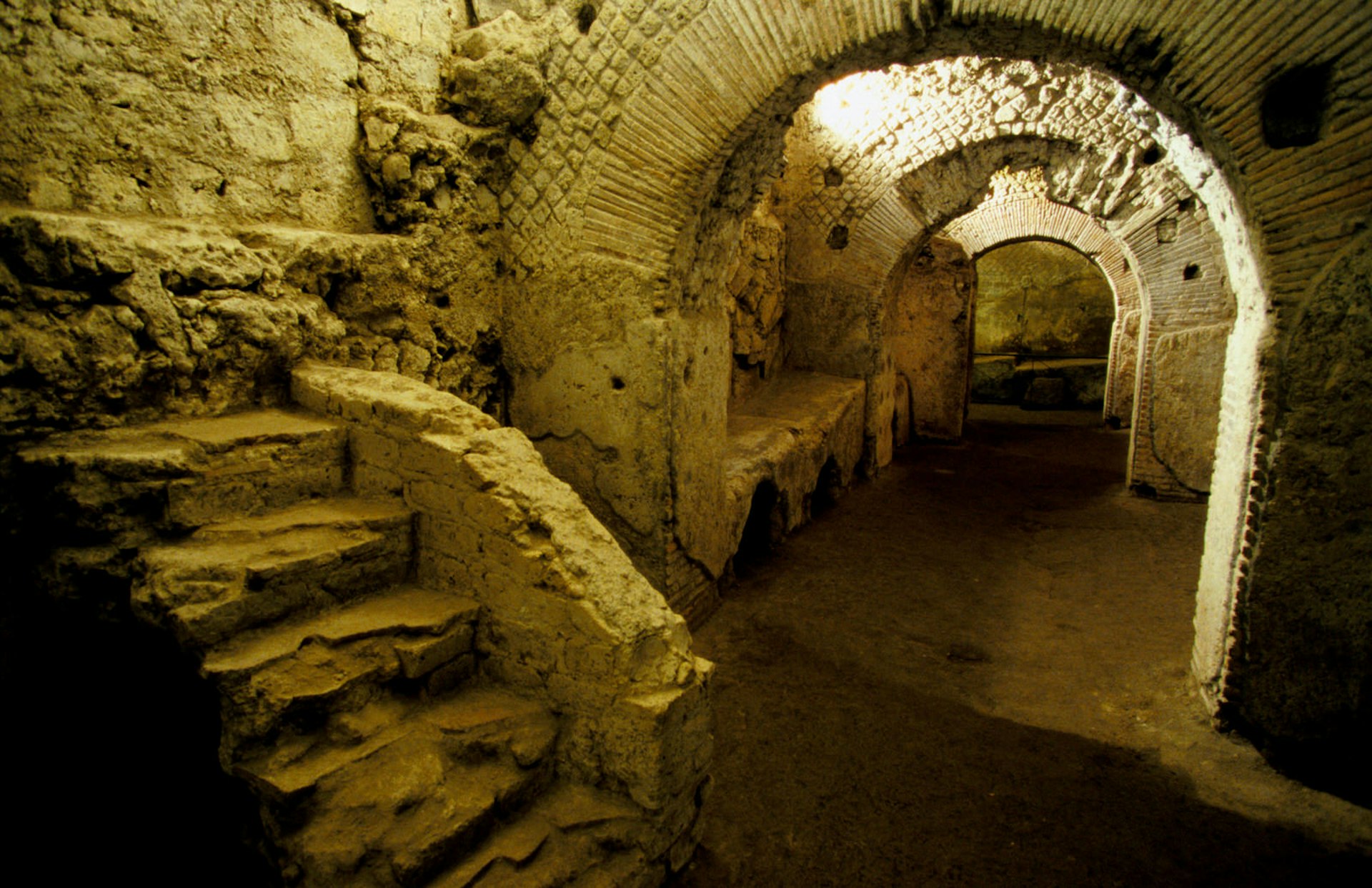
Explore ancient-Greek tombs at the Necropolis of Neapolis
Join a guided tour with Celanapoli (celanapoli.it, reservations required) to step behind the creaking door of an unremarkable palazzo and down a flight of dusty stairs into this treasured vestige: two hypogea of the Hellenistic Necropolis of Neapolis. An earthquake serendipitously unearthed these 2400-year-old Greek aristocratic tombs, their lavish burial practices evidenced by precious fresco fragments and extraordinarily, the ochre feet and draped legs of a partially excavated high-relief sculpture, seemingly trapped in time and rock.
Carve out time to explore the San Gennaro Catacombs
A two-level labyrinthine complex chiselled into the yellow tuff of Capodimonte hill, the San Gennaro Catacombs are the largest in southern Italy. State of the art LED lighting casts an otherworldly glow on the floor-to-ceiling burial chambers, solemn chapels and precious frescoes and mosaics. Naples’ favourite patron saint, San Gennaro, once rested here. His deserted tomb and the oldest known portrait of him remain.
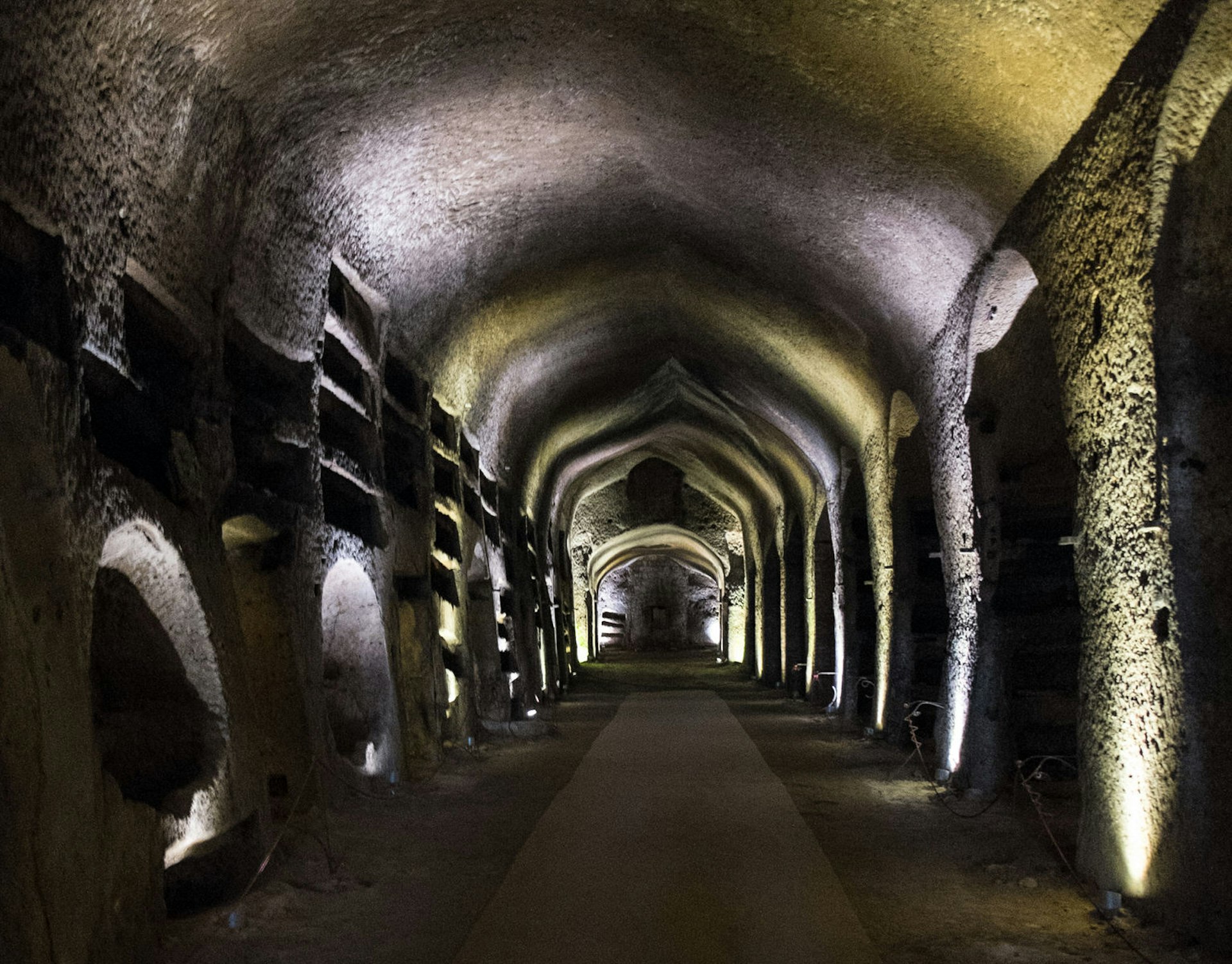
Dig into Dominican death rituals at the San Gaudioso Catacombs
Decompose and drain away: this was the ghastly burial practice favoured by the 17th-century Dominicans. Left behind at the San Gaudioso Catacombs are both the hollowed-out stone seats (cantarelle) that collected body fluids as they drained away and the skull-topped frescoes that acted as Dominican grave markers. Before the Dominicans, the North African bishop San Gaudioso and his contemporaries were entombed here. Frescoes and mosaics from the 5th and 6th centuries linger still.
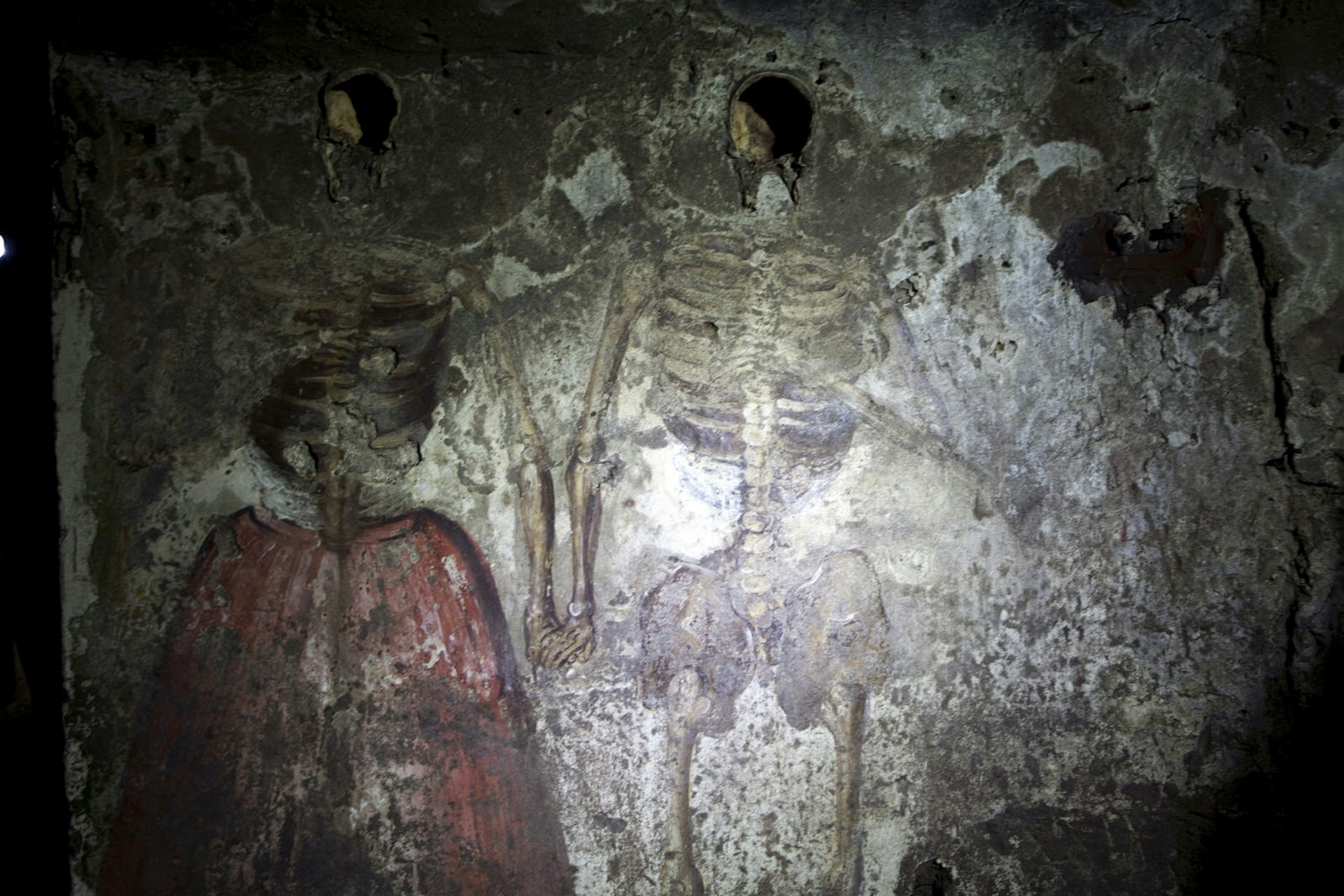
Both San Gaudioso and San Gennaro Catacombs can only be visited on a guided tour, with the same ticket valid for both sites.
Care for lost souls at Fontanelle Cemetery
Witness the bygone cult of the anime pezzentelle (adopting a skull and caring for it in return for good graces) at Fontanelle Cemetery. Purposefully piled into ashen skeletal stacks around the perimeter of this colossal cave, are the skulls and bones – perhaps 40,000 or more above ground, millions more below – of the indigent and victims of large-scale epidemics. Adopted skulls are adorned with rosaries, crosses, prayer cards, flowers and other paraphernalia.
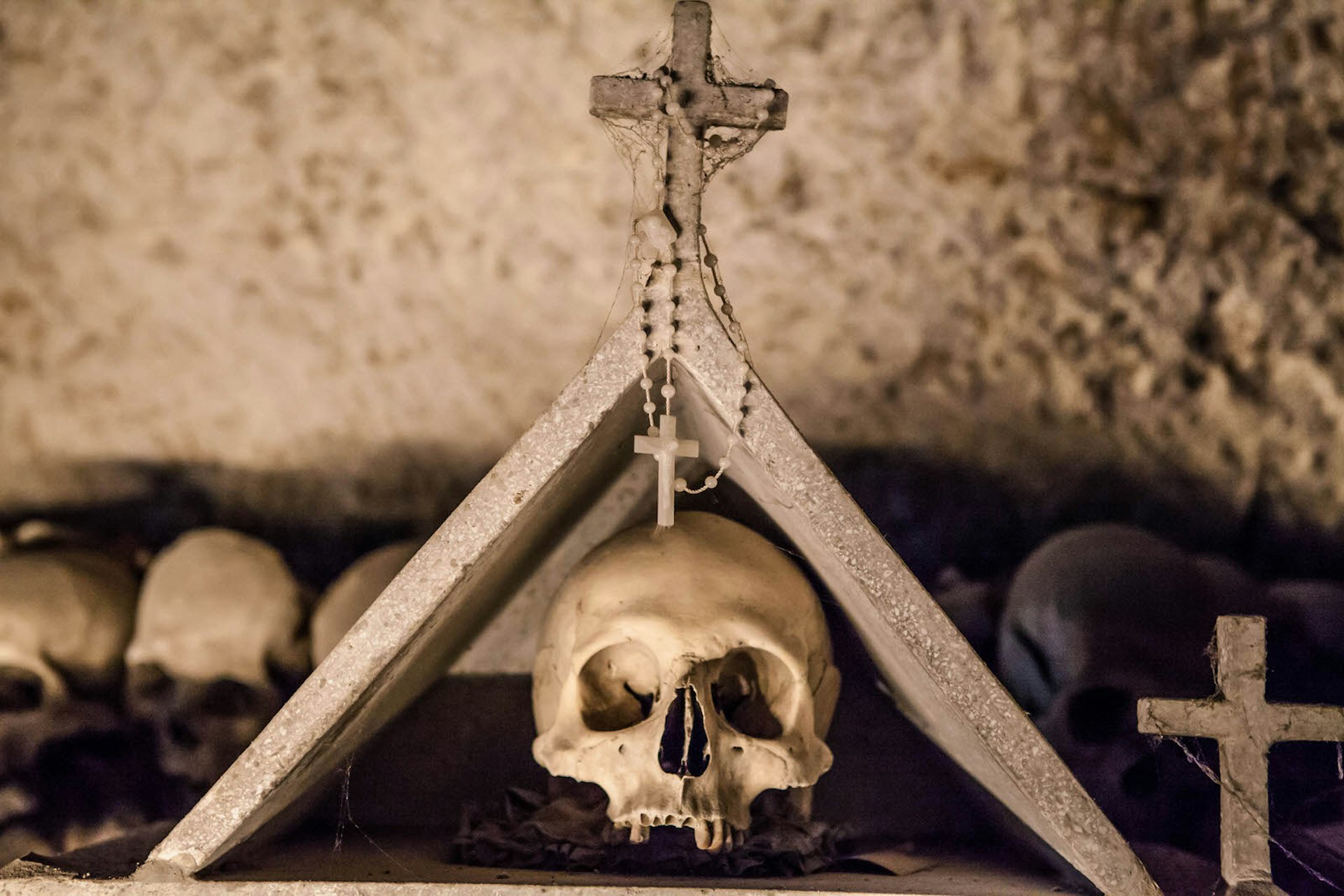
You can visit the cemetery, as well as the San Gennaro and San Gaudioso catacombs on Catacombe di Napoli’s Holy Mile tour.
One more crypt for the road
Skulls and femurs on this church’s facade foretell what is hidden beneath. Its name – Santa Maria of the Souls of Purgatory – hints that the cult of the anime pezzentelle is active here too. Find flower-strewn dirt beds, skulls and bones stacked into wall niches and a decrepit altar in a small, dank and dusty underground chapel (guided tours only). Most leave their offerings for the remains of the aspiring virgin-bride Lucia near the altar.
Journey to the centre of the earth at Toledo Metro Art Station
Naples Metro's pioneering Art Stations project has made top-quality contemporary architecture and artworks an integral part of its citizens' daily commutes. Of all the city's Art Stations, Toledo Station (Via Toledo, open 6am-11pm, metro ticket required to go beyond the turnstiles) shines brighter than the rest, and it has the awards to prove it. Burrowed 50 meters into the earth, this descent is not into darkness, but into the light, from the black ground, through the ochre earth and into the soft blues of the sea, where Robert Wilson’s light panels ferry passengers to the train platform.

Have a psychedelic encounter at the Università Metro Art Station
From Piazza Bovio follow Università Station's word tiles – spelling out words like fusion and software that were coined in the last hundred years – into Alice’s rabbit hole. Hot pinks, lime greens and lemony yellows explode into life-size, 3D Spirograph-like designs, hitting you like a psychedelic ton of bricks.
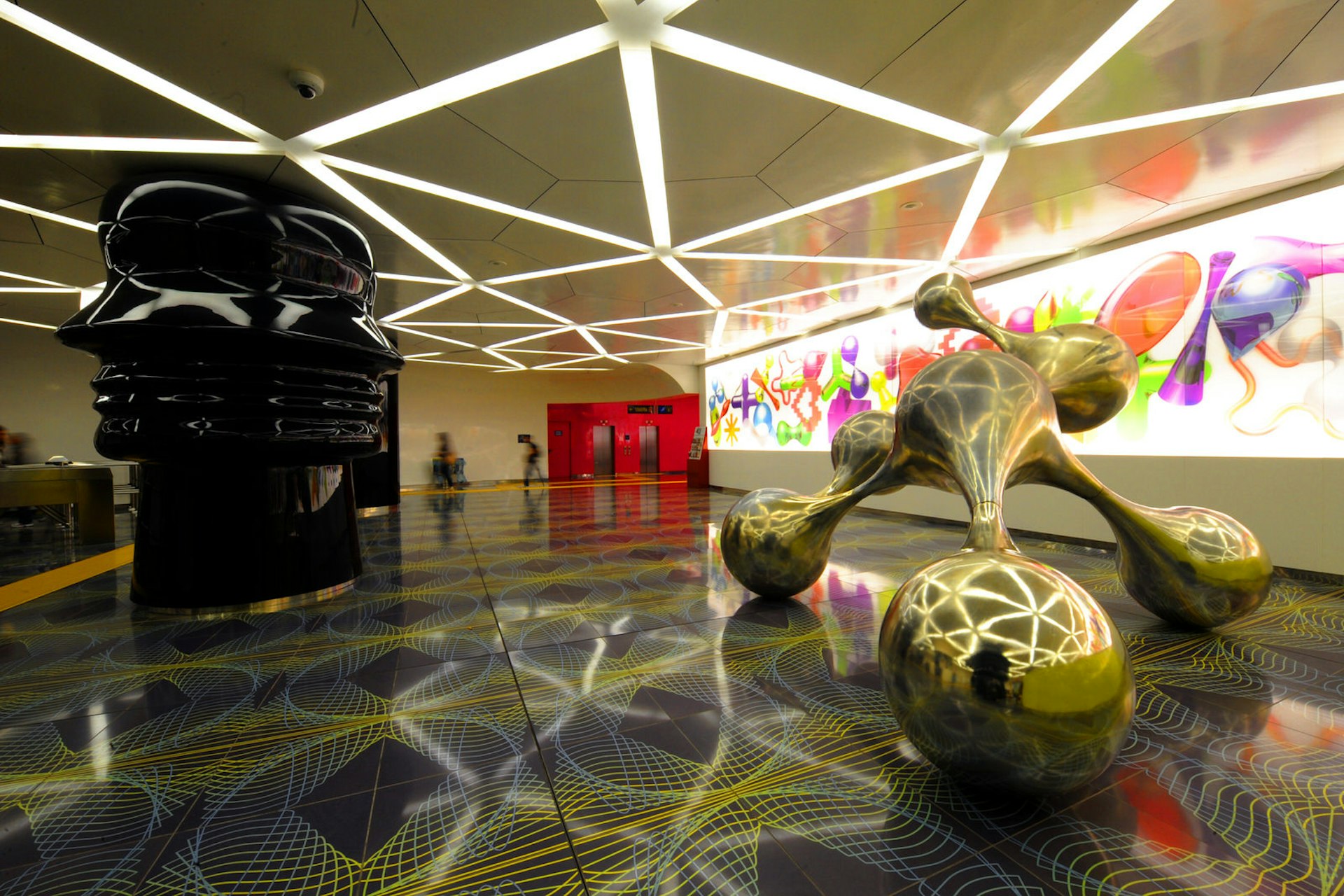
The station's patterns reflect on the slick metallic finish of massive synapse sculptures – a nod to human intelligence.




